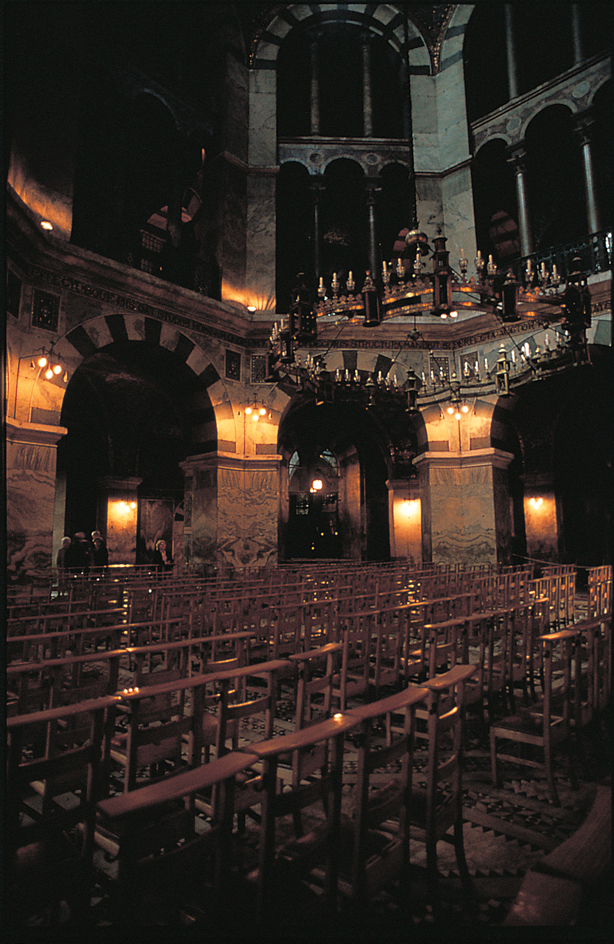Carolingian art was a style of art created in the late 700’s and the 800’s in France and western Germany. It is named for Charlemagne, who was king of the Franks from 768 to 814. Carolingian architects made major contributions to church design and monastic planning. Carolingian scribes created a new type of handwriting. In previous centuries, artists had emphasized abstract geometric patterns and fantastic animals. Carolingian painters, sculptors, and artisans reintroduced the human figure in a natural setting into the visual arts.

Carolingian architects claimed they were copying early Christian buildings, but they changed their models to suit their needs. These architects followed the plan of the early Christian church called the basilica, but they added chapels, elaborate crypts, and high towers. They also invented a westwork, an entrance that included a porch, chapels, two towers enclosing stairways, and, in an imperial church, a throne room. Carolingian abbots developed a monastic plan in which covered walks joined the church, the library, and the living quarters.
Carolingian scribes developed a beautiful, legible script, which they used in copying the Bible and other books. Painters added illustrations, such as narrative scenes and a portrait of the ruler.
